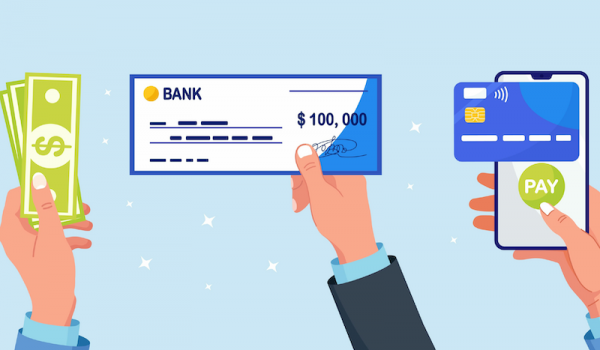
Every company needs an efficient, accurate way to track cash disbursements — a vital part of understanding cash flow tracking. Tracking cash flow is itself an incredibly important part of accounting. It goes beyond A/R and A/P and paints a vivid, crucial picture of your business health.
Yet managing your cash flow and tracking cash disbursements can be a monumental challenge. A shocking 61% of business leaders say they lose sleep over cash flow struggles. Poor cash flow leads to missed business opportunities, lost revenue, damaged relationships with employees and vendors, and can even lead to closing shop.
Newsletter sign up
"*" indicates required fields
On the upside, proper cash flow tracking can help you tap into new business, take advantage of changing market situations, create new offerings, and grow your company. So — let’s dig into cash disbursements. You’ll see the meaning of cash disbursement, how to do one, how to automate them, and how the right accounting software can help.
What is a Cash Disbursement?
In accounting, a cash disbursement is a payment made by one party to another. Also called cash payments or disbursements, they can be made by check, e-check, Automated Clearing House (ACH), digital payment, and all formats of payments recorded with an immediate deduction.
You can use cash disbursements to purchase inventory, pay for office supplies, make business loan payments, pay dividends, cover accounts payables and salaries, and make any other kind of payout that’s not handled with a credit account or credit card.
Funds that are relocated by an intermediary, like a lawyer’s payment to another party on your behalf, can also be considered a disbursement.
How to do a Cash Disbursement
To perform a cash disbursement, an employee issues a check, pays cash, or initiates an ACH or other funds transfer. That cash (or cash equivalent) payout gets recorded in a cash disbursement journal. The journal entry records:
- Disbursement date
- Name of the payee
- Funds disbursement or the amount debited and credited
- Disbursement/payment method
- The purpose of the payment
In the cash disbursement journal, a company itemizes all the financial expenditures it makes with cash (or cash equivalents). The cash disbursement journal helps create the organization’s general leger.
Why Cash Disbursements are Important for Businesses
Cash disbursements are a vital part of cash flow tracking. If your company records more disbursals than revenues, that’s an early warning sign that your business is in financial trouble.
Disbursements also flag your different payment methods and shed light on disbursed vs undisbursed funds. This paints a clearer picture of your cash flow status,. For small businesses, operating costs often need to be kept tight. If funds aren’t monitored closely, the company may quickly become insolvent.
Cash Disbursement Example:
Let’s say a payee invoices for an entire year at $1,600, with equal payment disbursements due quarterly. You’ll need to disburse a lump sum of $400 every third month. You’ll then enter these four cash disbursements into a cash disbursement journal. You’ll also record other disbursements in that journal, including loan disbursements, employee salary payments, vendor payments, and all other payments made with cash and cash equivalents. At the end of the year, you’ll use the total in your cash disbursements journal to estimate your spending during the next year.
Next, let’s take a look at the two different types of disbursements.
Types of Cash Disbursements
Any money paid in cash (or equivalents) is a cash disbursement. So — there are as many types of cash disbursements as there are different kinds of payments. Here are several cash disbursement examples.
- Customer refunds: A refund made to a customer is a disbursement of funds, recorded as a reduction of sales.
- Dividend payments: These cash disbursements are recorded as a reduction in corporate equity.
- Student loan payment: This kind of disbursement happens when a student loan payment is made to a student or borrower. The borrower is informed in writing from the bank and the school, notifying them of both the disbursed amount and the disbursement date.
- Will disbursement: The distribution of assets from a person’s estate is another type of disbursement. A lawyer or personal representative for the estate disburses funds according to a will.
- Business loan payment: Any business loan payment is a cash disbursement.
- Rent on physical locations: Rent payments made with cash, checks, or other equivalents are recorded as cash disbursements.
- Employee salary payments: Payroll payments to employees are cash disbursements.
- Purchasing equipment: Buying or making payments on business equipment is a disbursement that counts against unadjusted revenue.
Other Kinds of Disbursements
Disbursements can be controlled, delayed, positive, or negative. Here’s a little more info on the other disbursement types you might encounter.
Negative Disbursements
Disbursements can be both positive and negative. A positive disbursement happens when you create a credit in an account. Negative disbursement occurs when there’s a debit. For example, a business might overpay for a service, then receive a reimbursement of funds. That refund is recorded as a negative disbursement.
Controlled Disbursements
A controlled disbursement is a cash flow management service that banks provide to corporate clients. Controlled disbursements let businesses review and schedule payments. Controlled disbursements let companies maximize the interest they generate on their accounts by delaying payments.
Delayed Disbursements
Closely related to controlled disbursements, delayed disbursements keep funds from a disbursement check in an account as long as possible. Historically, checks could only be cashed when the issuing bank received the physical piece of paper. The digital world has eliminated this delay, but many companies still choose to use delayed disbursements to support their cash flow.
Non-cash Expenses
Companies record noncash expenses in their income statement, but there’s no cash transaction attached. Depreciation is one example. When a business enters depreciation into the income statement, that entry lowers the net profit without a cash disbursement.
What is a Drawdown?
A drawdown is a measurement of a decline in the value of an account resulting from a disbursement. When you’ve actioned a disbursement, the consequence of that transaction is a drawdown. The term “drawdown” is mostly used to discuss disbursement from a large account, like a retirement fund.
Automating Cash Disbursements with Accounting Software
When you automate cash disbursements, you free up valuable time for your accounting team. An automated accounting system like Accounting Seed makes it easy to put your cash disbursements on autopilot.
Accounting Seed connects with applications such as ACH Connect — and has partners like Clear Cloud One that can automate cash disbursements for your business. The ACH Connect Accounting Seed Extension automates payments and subsequent Cash Receipts or Disbursements when Billing and Payable Records come due. Click here to learn more about the ACH Connect Accounting Seed Extension.
Creating a Manual Cash Disbursement with Accounting Seed
With Accounting Seed’s manual cash disbursement feature, you can make single and batch payments via Salesforce. Accounting Seed’s cloud-based software allows for easy, automated disbursement transactions and smooth disbursement flows.
Accounting Seed automatically records disbursements in your company’s disbursement journal for a simple and efficient transaction recording and accounting process.
To create a cash disbursement with Salesforce and Accounting Seed, see our guide to creating cash disbursements. In it, you’ll find steps to:
- Create a Manual Cash Disbursement
- Create a Batch Payment Payable
- Create a Single or Partial Payment Payable
- Apply a Cash Disbursement to a Payable
Plus a guide to Checkbook.io Distribution Types
Related Accounting Tasks
Cash disbursements aren’t the only repetitive accounting tasks you can automate. Accounting Seed users can also create custom management reports with custom rows and columns detailing cash disbursements by batch. You can also create several other types of useful reports to bring clarity and insight to your business. To learn more about custom reports with Accounting Seed, see our guide to management reports and dashboards.
Learn More with an Accounting Seed Consultation
Making cash disbursements with Accounting Seed is easy, but if you do need help, we’re ready with a free consultation. Book a session with one of our helpful and knowledgeable consultants today to learn more.
A native Salesforce accounting app, Accounting Seed, provides a full 360-degree view of your business’ performance to help you and your team make the best decisions possible. Not on Salesforce? Our software can be customized to work with any system you have through a reliable connection.
See Accounting Seed in action
Get a close-up view of how accounting on Salesforce can eliminate the need for costly integrations—and silos of mismatched information—by sharing the same database as your CRM.



